
ah!LOHAS
My Role
Tools
Duration
- User Experience (UX) Designer
- User Interface (UI) Designer
Deliverables
Research, Ideation, Brand identity, Interaction Design
Tools
Figma, Dovetail, Adobe Illustrator
Duration
6 weeks
Project Background
The surfing community is experiencing a significant influx of new members, leading to a corresponding growth in the industry.
The sales figures for surfboards and surfing accessories reach an impressive $3.1 billion each year, with experts anticipating further growth. However, as the industry expands, the harmonious coexistence of surfing and the ocean becomes increasingly challenging, resulting in environmental harm. There is a need for an online community that can foster a sustainable and environmentally friendly surfing experience.
Project Goal
With a deep understanding of the importance of sustainability and community building within the surfing community, I am in the process of constructing a digital platform that aims to cultivate a vibrant and conscientious surfing culture. Simultaneously, this platform will provide inclusive opportunities for newcomers to easily access and engage in the world of surfing.
Project process

Design Solution


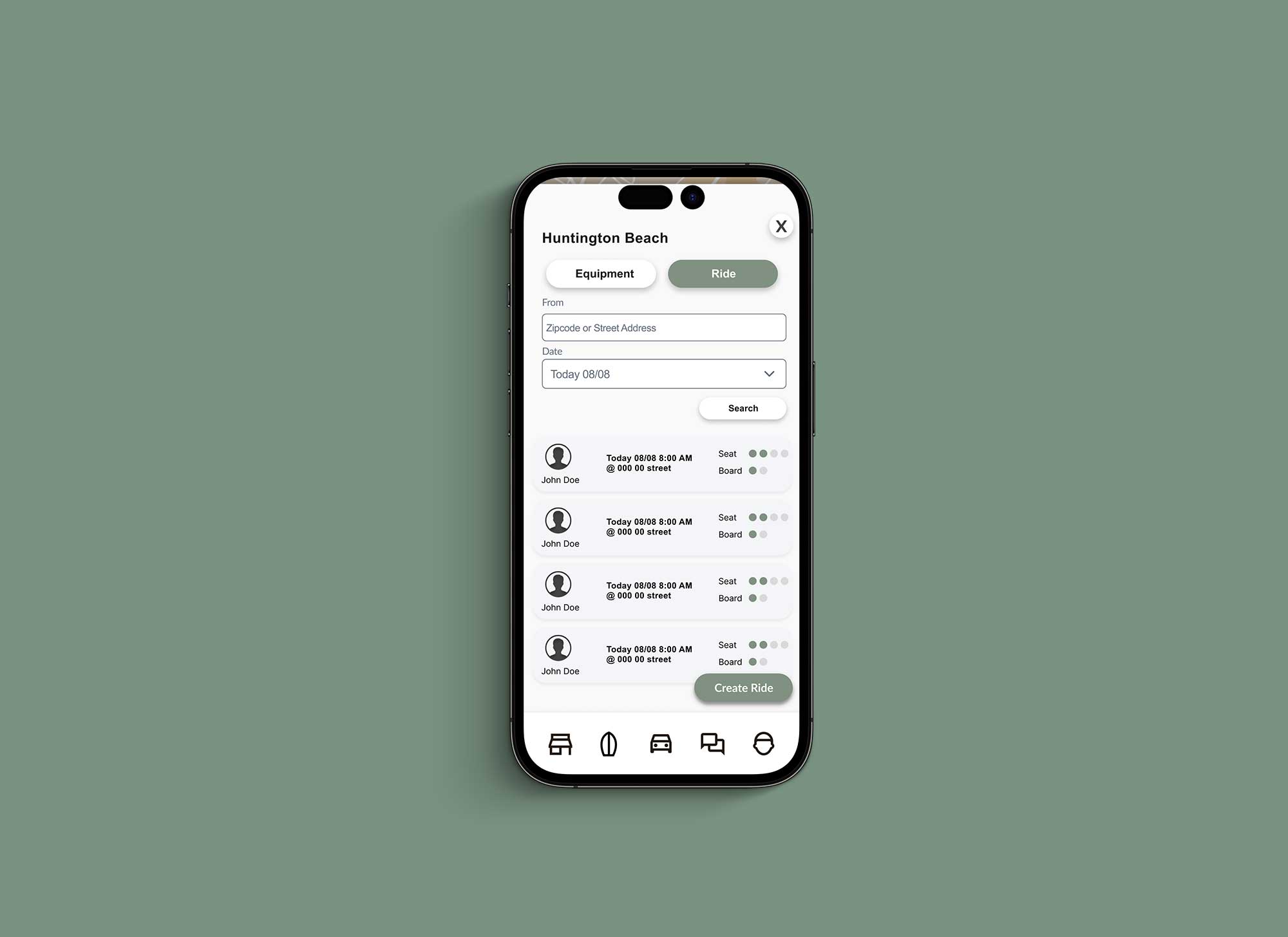

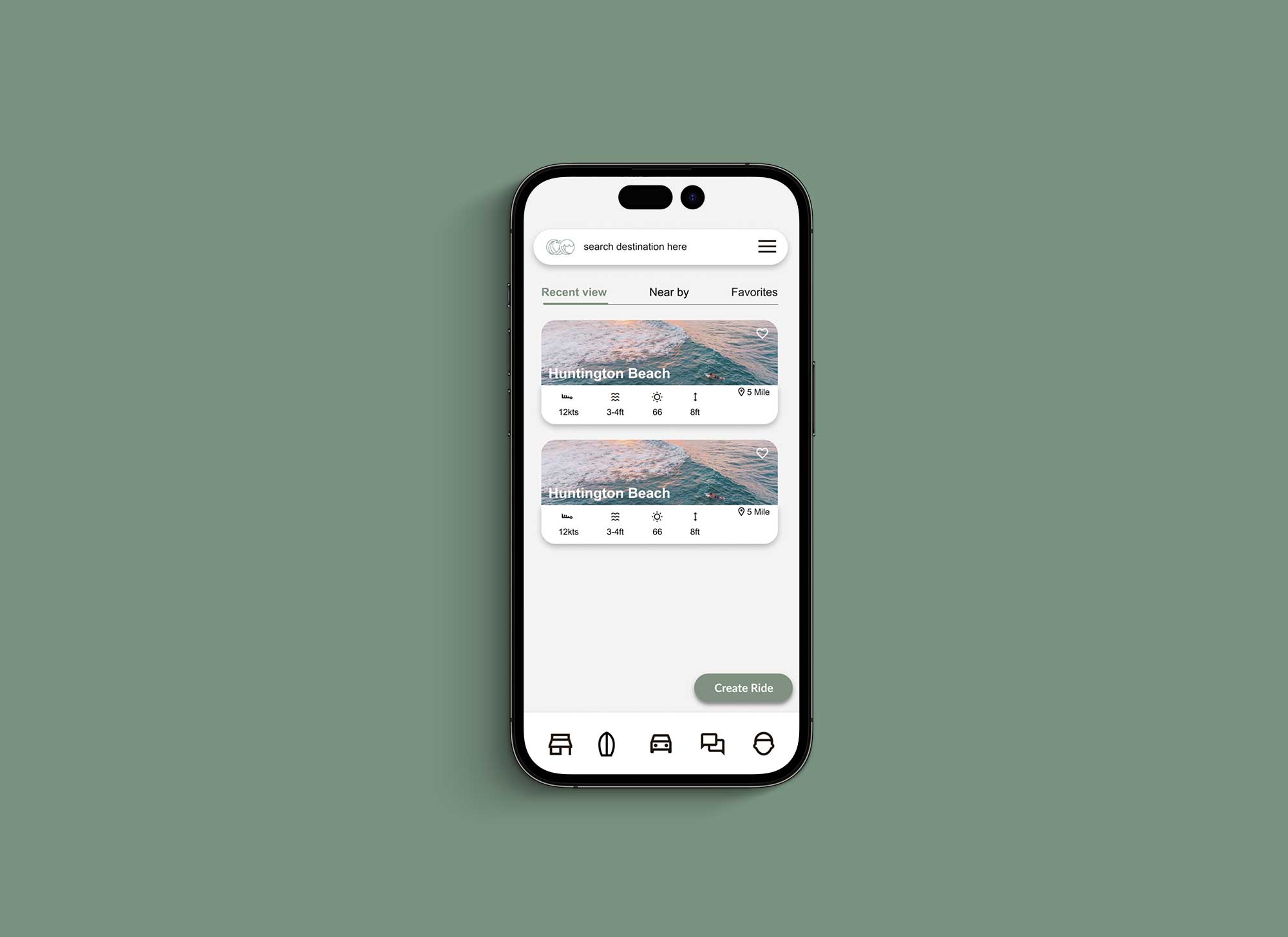


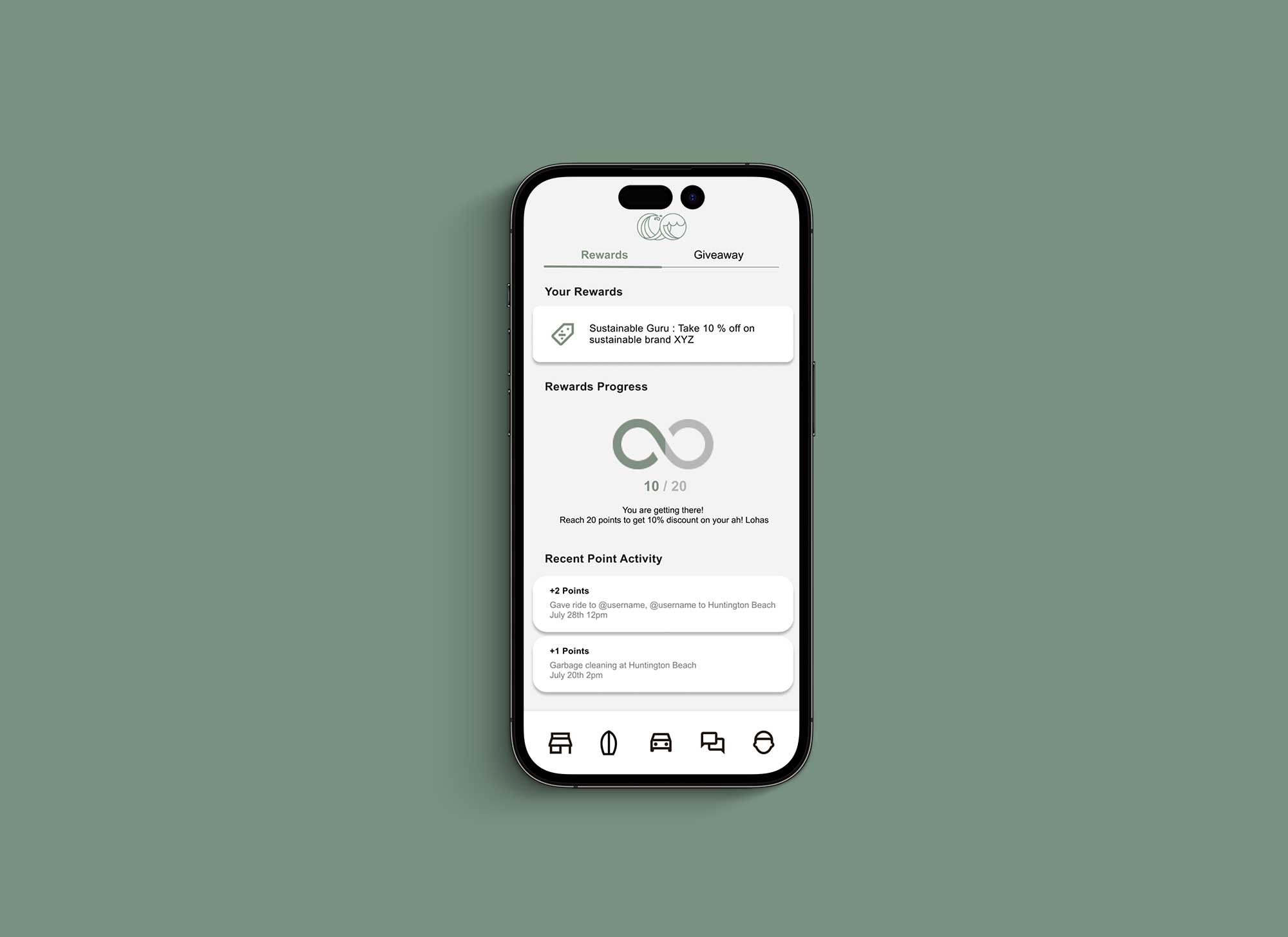
Problem Scope : Why Surfing?
The surfing industry's expansion is evident on a global scale, including in various locations around the world. For instance, in Busan, South Korea, the Songjung beach serves as a notable example. Over the years, we have witnessed firsthand how the growth of the surfing industry can impact the surrounding environment and the beach ecosystem. This observation has highlighted the necessity for a sustainable surfing community, particularly for local surfers, and the importance of establishing an open platform that facilitates the seamless integration of new beginners into the surfing culture.
The growth of the surfing industry has brought both positive and negative impacts to beaches and coastal areas worldwide. Recognizing the need for sustainability and fostering a sense of community among surfers, while also creating accessible pathways for beginners, can contribute to the development of a thriving and responsible surfing culture.
The growth of the surfing industry has brought both positive and negative impacts to beaches and coastal areas worldwide. Recognizing the need for sustainability and fostering a sense of community among surfers, while also creating accessible pathways for beginners, can contribute to the development of a thriving and responsible surfing culture.

Research
The research process began with a competitive analysis of existing mobile applications for surfers, focusing on community building and enhancing the surfing experience. Surfers' awareness of sustainable practices and their desire to build a sense of community were also examined. A literature review was conducted to understand the environmental impact of the surfing industry and existing regulations or initiatives in place to protect the ocean and its ecosystems. One-on-one interviews with surfers were planned to explore their adoption of sustainable practices and motivations for building a sustainable surfing community. These research methods aimed to gather comprehensive information on the market landscape, surfer preferences, environmental concerns, and user experiences. The ultimate goal was to use this knowledge to develop a mobile application that promotes sustainable surfing practices and fosters an active and supportive surfing community.
Findings
1. Transportation
Users without access to personal transportation face challenges reaching the location, as public transportation options are limited due to the bulkiness of surfing equipment.
2.Equipments
The portability of surfboards is restricted by their size, making it challenging to transport them easily. Furthermore, surfboards can be expensive, and some models made from non-sustainable materials such as plastic contribute to environmental concerns. Choosing the right board can also be a daunting task for beginners.
3.Surfing Tourism
Many experienced surfers aspire to visit specific locations for their unique surfing experiences. Unfortunately, the growing popularity of surfing has led to coastal development that often overlooks the environmental consequences.
Design Opportunity
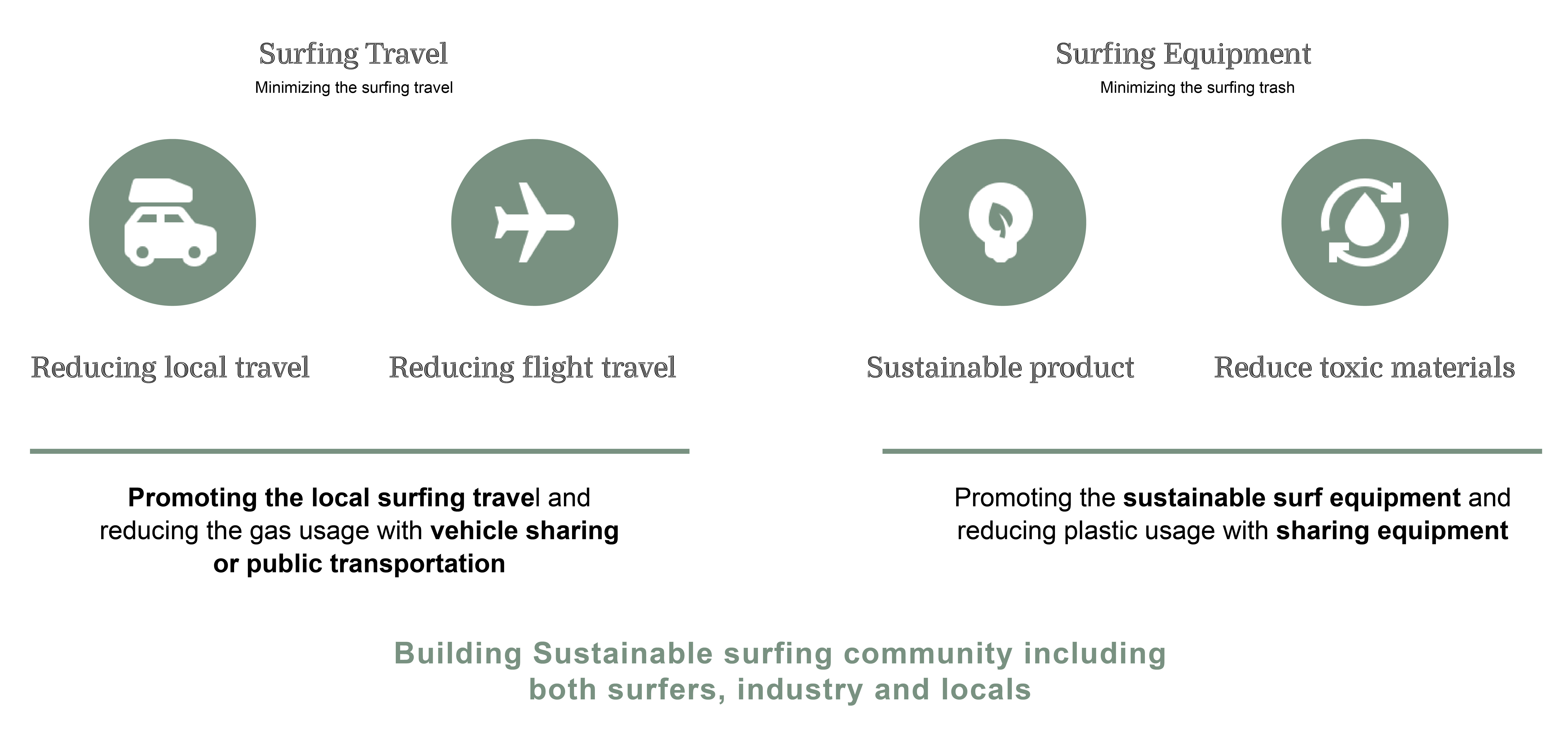
Design Inspiration : Karrot
Portfolio review : Case Study
The mobile app platform facilitates local community members in buying and selling items by arranging in-person meetups. The platform's services have expanded beyond basic products to include a wide range of offerings, such as fresh goods delivery, cleaning services, educational services, real estate brokerage, and even vehicle sales.

On the platform, users have the ability to create posts for services or products they wish to offer, and interested individuals can initiate a conversation to negotiate payment methods and meetup locations.
Building a Framework
This site map, the result of the literature reviews, interviews, and portfolio review I conducted, revealed that:
- As the quality of the wave changes due to the weather and the location, the live updates with the weather is necessary
- The booking and oppointment should be flexible due to the weather
- There should be a positive incentives for the good act and some restriction as the consequence of non-sustainable act

Defining Visual Guideline





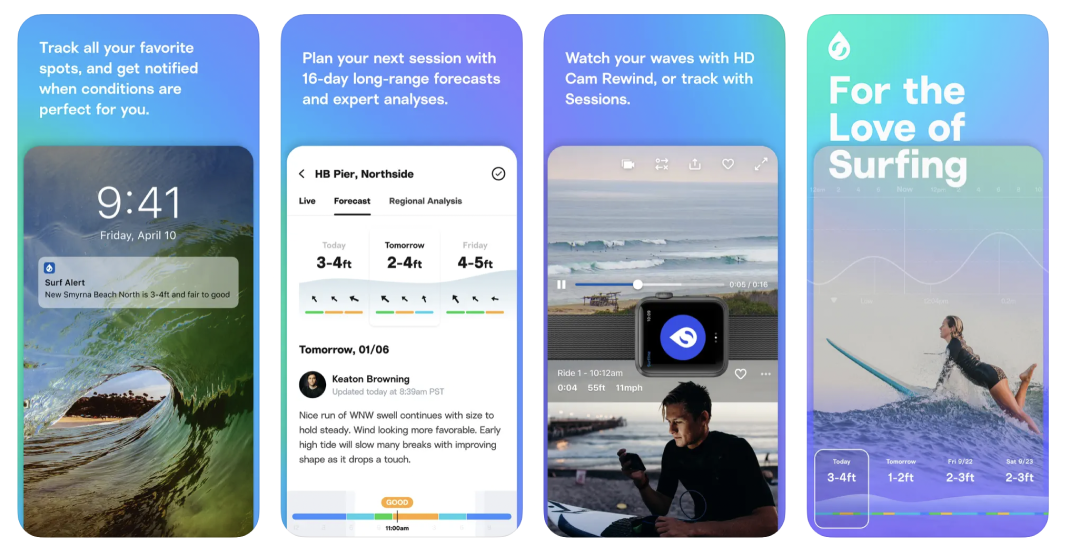
World Surf League
Focus on surfing as a competitive sport
Information about surfing competition around the world, professional surfers, and blog posts or videos about surfing competitions.
Focus on surfing as a competitive sport
Information about surfing competition around the world, professional surfers, and blog posts or videos about surfing competitions.
Windy
Detailed weather information
Presenting diverse data like wind speed, directions, wind gusts, cloud coverage, wave direction, wave height, Moon phase etc,.
Detailed weather information
Presenting diverse data like wind speed, directions, wind gusts, cloud coverage, wave direction, wave height, Moon phase etc,.
Surfline
More personalized surfing weather app
Getting the notification of specific location that users prefer and providing the live video views of the coast. It has more user friendly graphics
More personalized surfing weather app
Getting the notification of specific location that users prefer and providing the live video views of the coast. It has more user friendly graphics
Insights
Major Function :
Delivering the information like surfing competitions, star players
Information Representation :
Hard to read in one glance ; Diverse weather data spread out with layers
Lack of consideration around sustainability :None of the major surfing app had specific connectivity with sustainable surfing culture
Lack of community building
The surfing industry's impact on the environment extends beyond the changes to beach landscapes. The production and consumption of surfing-related materials contribute to ecological concerns. For instance, the production of approximately 400,000 new surfboards annually results in the consumption of significant resources and energy. Additionally, the use of around 6 million bars of toxic wax, which contain harmful chemicals, raises environmental concerns. Furthermore, the disposal of wetsuit scraps, amounting to approximately 250 tons each year, adds to the waste management challenge.
Surfing tourism presents another significant issue. Surfers often chase the perfect wave conditions, leading to increased coastal driving and the burning of fossil fuels. This not only contributes to air pollution but also exacerbates carbon emissions and climate change. Moreover, unsustainable development along coastlines, driven by surfing tourism, poses a threat to fragile ecosystems such as coral reefs. Irresponsible construction and disregard for environmental regulations can lead to the destruction of vital habitats and the degradation of the ocean ecosystem.
Surfing tourism presents another significant issue. Surfers often chase the perfect wave conditions, leading to increased coastal driving and the burning of fossil fuels. This not only contributes to air pollution but also exacerbates carbon emissions and climate change. Moreover, unsustainable development along coastlines, driven by surfing tourism, poses a threat to fragile ecosystems such as coral reefs. Irresponsible construction and disregard for environmental regulations can lead to the destruction of vital habitats and the degradation of the ocean ecosystem.

The surfing industry's impact on the environment extends beyond the changes to beach landscapes. The production and consumption of surfing-related materials contribute to ecological concerns. For instance, the production of approximately 400,000 new surfboards annually results in the consumption of significant resources and energy. Additionally, the use of around 6 million bars of toxic wax, which contain harmful chemicals, raises environmental concerns. Furthermore, the disposal of wetsuit scraps, amounting to approximately 250 tons each year, adds to the waste management challenge.
Surfing tourism presents another significant issue. Surfers often chase the perfect wave conditions, leading to increased coastal driving and the burning of fossil fuels. This not only contributes to air pollution but also exacerbates carbon emissions and climate change. Moreover, unsustainable development along coastlines, driven by surfing tourism, poses a threat to fragile ecosystems such as coral reefs. Irresponsible construction and disregard for environmental regulations can lead to the destruction of vital habitats and the degradation of the ocean ecosystem.
Surfing tourism presents another significant issue. Surfers often chase the perfect wave conditions, leading to increased coastal driving and the burning of fossil fuels. This not only contributes to air pollution but also exacerbates carbon emissions and climate change. Moreover, unsustainable development along coastlines, driven by surfing tourism, poses a threat to fragile ecosystems such as coral reefs. Irresponsible construction and disregard for environmental regulations can lead to the destruction of vital habitats and the degradation of the ocean ecosystem.

Conducted Interviews with three participants with semi-structured interview
Main Interview Questions :
-
What is your experience with surfing? How often do you surf and where?
- Do you associate with any surfing subculture?
- Do you think surfing is eco-friendly activity?
- Are there any activities you perform to keep surfing sustainable?
Interview 1
Male, 54
Surgeon
Experience | 6 years
Location | Song-jung, Busan Kroea
“Summer is the best time to surf. But now I hate surfing during summer. So many beginners and tourists. I’m grateful they are interested in surfing, but they have no respect”
Male, 54
Surgeon
Experience | 6 years
Location | Song-jung, Busan Kroea
“Summer is the best time to surf. But now I hate surfing during summer. So many beginners and tourists. I’m grateful they are interested in surfing, but they have no respect”
Interview 2
Female, 41
Surf shop owner, Graphic designer
Experience | 20 years
Location | Gang-reung & world wide
“Every year it changes. Compared to 10 years ago, you won’t believe it. Of course now this place is getting more expensive and it benefits me.
Not sure if this is good for environment”
Female, 41
Surf shop owner, Graphic designer
Experience | 20 years
Location | Gang-reung & world wide
“Every year it changes. Compared to 10 years ago, you won’t believe it. Of course now this place is getting more expensive and it benefits me.
Not sure if this is good for environment”
Interview 3
Male, 23
Student
Experience | 1.2 years
Location | California
“I want to do more for the ocean. But convenience always wins”
Male, 23
Student
Experience | 1.2 years
Location | California
“I want to do more for the ocean. But convenience always wins”